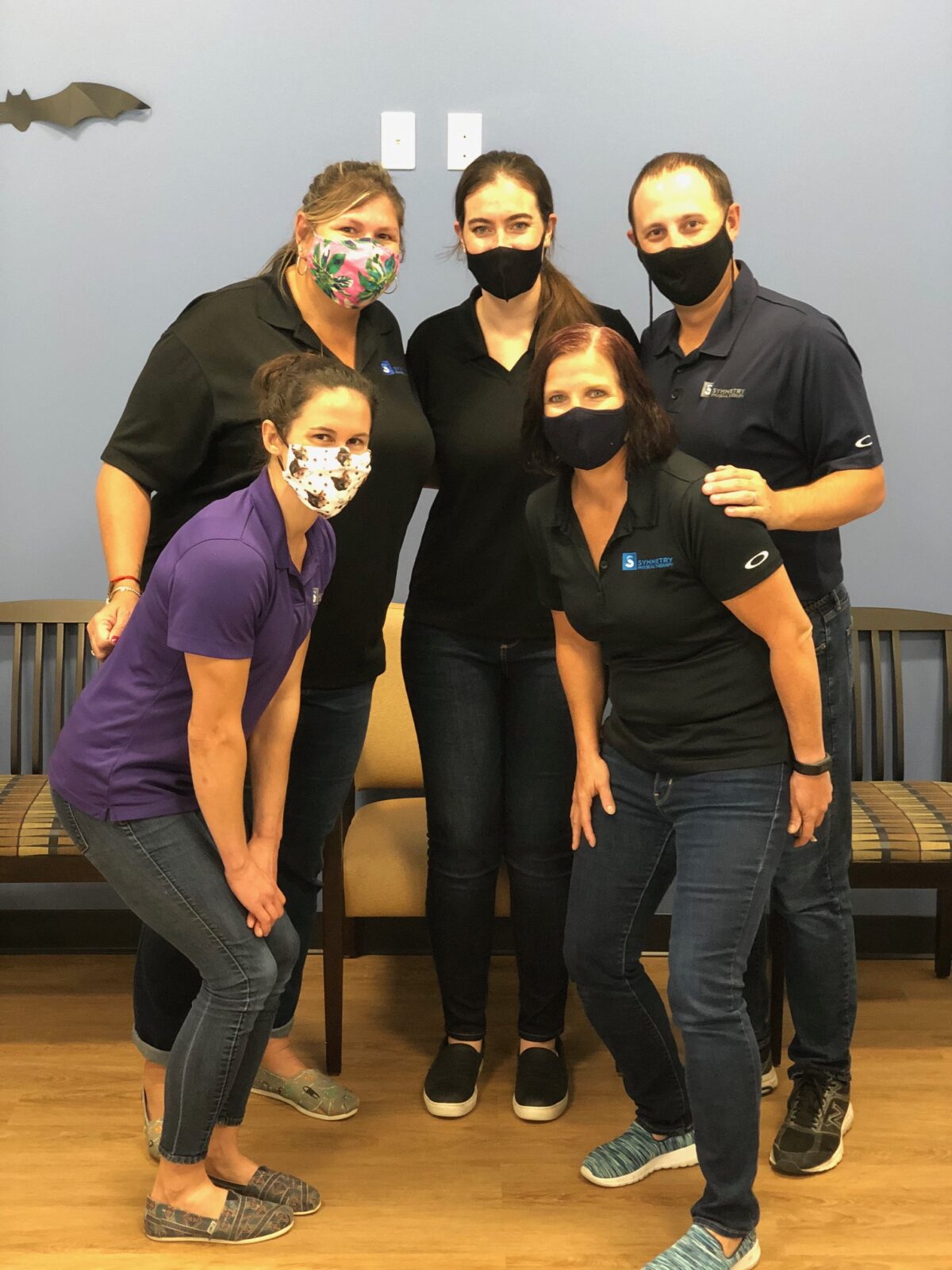This article was written by Hilary Sparkman, SPT – a doctoral student at Texas State University who has just finished a clinical rotation with Symmetry. (She’s pictured in the center of the back row in the masked staff photo above. She just turned 29, and has already accumulated a great deal of worldly experience.) Thanks for sharing your story, Hilary!
One of my favorite things about getting older is reflecting on my life and realizing how the experiences I’ve had, the choices I’ve made, and the people I have met have lead me to where I am today. My path to physical therapy is one that I like to call “the scenic route,” because there have been several detours along the way. However, I am now able to look back with gratitude on each experience that has led me to what I believe is the greatest profession in the world.
Although I am an American citizen, I was born and raised in Thailand for 18 years. One of the most impactful experiences I had growing up in Southeast Asia was leading sports ministry camps in refugee villages along the Thai/Burmese border. Witnessing the joy that sports brought to children, many of whom had lost their homes, parents, and siblings due to the ongoing Burmese civil war, inspired me to study sports medicine with the hope of returning to Asia one day.

After receiving a Master of Science in Athletic Training degree from Texas A&M University, I was privileged to work with an international sports medicine company in Beijing, China. This position allowed me to work as an outreach athletic trainer for international schools, a physical therapy clinic, and local Chinese sports teams. Growing up in Thailand prepared me for moving back overseas, however, the transition came with many personal and professional challenges. In addition to starting my first job, I had to adapt to life in a foreign country where I did not know the language or understand the culture. I struggled to navigate public transportation, pay bills in foreign currency, and maintain my health in a city with over 300 days/year of pollution. This experience not only opened my eyes to new ideas and customs, but also forced me out of my comfort zone and made me appreciate certain things (like blue skies) that I had always taken for granted. However, I quickly experienced the kindness of the local community in Beijing and began to fall in love with Chinese culture.
In addition to personal challenges, I also faced many professional challenges while working abroad. China does not currently recognize the profession of Athletic Training, and therefore, many people I encountered were unfamiliar and skeptical of my role. After months of volunteering at community sporting events, clinics, and schools, I was able to build relationships with local healthcare providers. After slowly building their trust, I was asked to work part-time at an international clinic with local physical therapists. This experience gave me the opportunity to serve both the Chinese and expatriate communities in Beijing, while continuing to learn about physical therapy practice in China.

To this day, Traditional Chinese Medicine (TCM) is widely used in Chinese healthcare and the vast majority turn to it as their first choice of treatment. Physical therapy, however, is highly underutilized and poorly understood by both the public as well as local physicians. This is because the government only recently granted permission for physical therapy education when China won the bid for the 2008 Olympics. Unfortunately, physical therapy practice in China, and much of Asia, consists mainly of passive exercises and physical agents (like hot packs or ice), many of which are not evidence-based. As a result, I encountered many patients and young athletes with functional impairments due to a lack of proper rehabilitation, and struggled to convince patients of the importance of early, active interventions to train movement patterns and posture and hands-on interactive care for joints and muscles after physicians would prescribe prolonged immobilization or passive modality-based treatments.
Respect for all people, especially family, elders, and those in authority is foundational to Chinese culture. I knew that in order to change the perception of people’s view towards rehabilitation, I would have to carefully educate patients, physicians, and physical therapists while also showing the utmost respect for their traditional practices. I began learning about TCM from my patients and after building their trust, I slowly integrated my background of Western medicine into their treatment. This allowed patients to see the effectiveness of rehabilitation activities for themselves while also using their familiar treatment methods. It was extremely rewarding to witness my patients develop faith and confidence in physical therapy on their own and work in an environment where Western and Eastern medicine coincided to improve each patient’s quality of life.

After my experience overseas, my eyes were opened to countless new ideas and customs. One of my most meaningful takeaways was realizing just how powerful physical therapy is and that I had so much more to learn. This prompted me to continue my educational journey and pursue a Doctor of Physical Therapy degree at Texas State University. I am now in my 3rd year of the program and will graduate in the spring of 2021 – prepared to launch into physical therapy professional practice as the next phase of my journey. No matter where life takes me next, I will always be thankful for the learning opportunities I’ve had in Texas and will never forget the significant role Symmetry Physical Therapy has played in my development as a future physical therapist.

